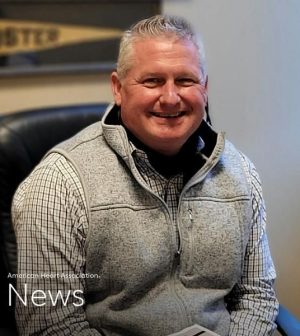- Navigating Your Midlife Crisis: Embracing New Possibilities
- City Raccoons Showing Signs of Domestication
- Mapping the Exposome: Science Broadens Focus to Environmental Disease Triggers
- One Week Less on Social Media Linked to Better Mental Health
- Your Brain Changes in Stages as You Age, Study Finds
- Some Suicide Victims Show No Typical Warning Signs, Study Finds
- ByHeart Formula Faces Lawsuits After Babies Sickened With Botulism
- Switch to Vegan Diet Could Cut Your Greenhouse Gas Emissions in Half
- Regular Bedtime Does Wonders for Blood Pressure
- Dining Alone Could Mean Worse Nutrition for Seniors
AHA News: Orthopedic Surgeon Becomes Patient After Stroke at 48

FRIDAY, May 14, 2021 (American Heart Association News) — As usual, Dr. Mike Knapic’s workday was packed. By early afternoon, the orthopedic surgeon had completed three total knee replacements and was headed into surgery to repair a broken collarbone.
Throughout the day, he’d felt a strange sensation. Every 10 minutes or so, he’d slur his speech for about 20 to 30 seconds and the right side of his tongue felt numb.
Knapic felt a little sluggish, too, so he thought he might be getting a cold. He called a physician friend to look him over.
At 48, Knapic’s life was busy with his practice, his wife and three kids, volunteer work and playing bass in a local rock band. That left little time for him to prioritize his health, although the former college football player regularly lifted weights.
“I knew I had some hypertension, but I didn’t seek treatment or get a regular physical,” Knapic said. “I was probably just stubborn.”
The doctor friend checking him out mid-day said Knapic’s heart sounded normal. His blood pressure was elevated, but not alarmingly. So Knapic went home, took a nap and showed up for a meeting of the Wooster (Ohio) City Schools Board of Education, of which he was president.
During the meeting, he passed out. A fellow member helped him up. Knapic went into the hallway to gather himself.
He returned to the room to finish the meeting.
“No way,” the school superintendent told him. “You’re going straight to the ER.”
A cardiologist checked him over and sent him home with a Holter monitor, a type of portable electrocardiogram, to record his heart activity.
During the night, he got up, lost his balance and fell on his way to the bathroom.
He called his physician friend the next day.
“I think we need an MRI of my head to see what’s going on,” Knapic told him.
The MRI showed he’d had a stroke. Doctors also discovered he had vertebral artery stenosis, a narrowing that can reduce blood flow to the brain. It appeared too late to do anything about the stroke because it had passed.
But once he was home, Knapic’s speech and balance worsened.
Another trip to the hospital resulted in a diagnosis of an ongoing pontine stroke, which affects the brain stem and often causes problems with balance and sometimes speech. Now that doctors understood the source of it all, they inserted a stent in Knapic’s brain to try preventing further complications.
Still, much damage had been done.
“My speech was awful, and my balance was really off,” Knapic said. His life had been turned upside down, he said, “but you can either succumb to that and sit around and feel sorry for yourself, or do something about it.”
Knapic visited a rehabilitation facility three times a week for physical therapy, speech therapy and occupational therapy. The other four days, he did his own exercises, especially for dexterity.
“One of first things I told the therapist was, ‘I’ll do what I need to go back to surgery,'” he said. “There are a lot of things that are muscularly ingrained, but you’ve got to wake them up.”
Another form of therapy – mentally as well as physically – was playing the bass. He also took home surgery tools and practiced manipulating them.
Four months into his rehab, Knapic could barely do a situp. Yet the physical therapist said he’d maxed out his recovery.
“I thought to myself, ‘Oh no you haven’t,'” Knapic said.
He continued exercising on his own and started working with a personal trainer. He eventually returned to the gym where he’d previously trained. These days, three and a half years later, he can do 50 situps and 50 pushups in one workout.
As much as his recovery was about regaining skills, he also was trying to reclaim his identity.
That, of course, included being a surgeon.
At first, Knapic shadowed his partners in the office and in surgery. Despite ongoing issues with balance and speech, the team believed Knapic was capable of resuming his duties six months after his stroke. Patients received a letter informing them about his compromised speech and assuring them he was cleared to perform surgery.
“Mike is probably the most determined individual I’d ever met,” said Kathy Rakovec, his medical assistant for 20 years. “Since the stroke, that’s been way over the top.”
American Heart Association News covers heart and brain health. Not all views expressed in this story reflect the official position of the American Heart Association. Copyright is owned or held by the American Heart Association, Inc., and all rights are reserved. If you have questions or comments about this story, please email editor@heart.org.
By Diane Daniel
Copyright © 2025 HealthDay. All rights reserved.










